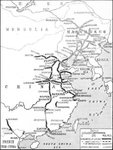GrauGeist
Generalfeldmarschall zur Luftschiff Abteilung
I'm not sure that the Japanese would want to stray out into the midwest, when a vast majority of thier needs could be met with West coast resources. Southern California was rich with oil, agriculture, cattle dairy resources. If they were able to entrench themselves on the west coast, they would be in a good position to negotiate terms.
It was mentioned earlier that the Rockies would make a good barrier against further eastward invasion, and I would imagine the invading forces would have see this, and even think of it as a defensive barrier against U.S. forces from the east as well.
It was mentioned earlier that the Rockies would make a good barrier against further eastward invasion, and I would imagine the invading forces would have see this, and even think of it as a defensive barrier against U.S. forces from the east as well.




